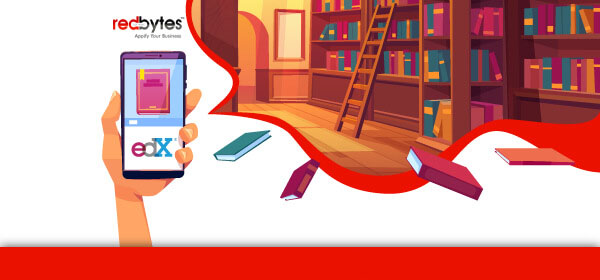The digital world has now become more mobile as a result of smarter handsets and superior internet connectivity. Your smartphone is the gateway to the online world and often the first point of contact when it comes to getting jobs done or even asking a question.
Mobile browsing, in general, has gone up the popularity ladder. That said, mobile apps today play a vital role in the consumer’s overall digital experience. While brands may be under the impression that mobile applications cater to the needs of a very niche audience, new research shows to be false.
Mobile apps are being used by over 93% of smartphone users. So, whether you are young or old, man or woman and even children to a certain extent, if you have access to a smartphone, chances are that you will be using mobile apps, one way or another.
Why Does The Sports Industry Need Mobile Apps?

Even though the popular presumption is that sports industry is that people prefer watching matches and games on big screens from the comfort of their homes, a large chunk of the user-base has shifted to sports mobile apps in the last 5 years.
The report by Statista finds, “Mobile app verticals with the highest install and user base growth in 2018”.
Sports apps have turned out to be the third fastest -rowing app category. Sports and game apps are only behind social, messaging and taxi/ cab hailing applications.

The Flurry report stated that mobile app usage grew by almost 11% whereas overall sports app usage increased by 46% worldwide. The epicenter of growth was primarily seen in the European countries where sports app usage and their average sessions rose by 90%.
With the global sports market flourishing, the spectator segments too will evolve. Therefore, the need for mobile apps in the sports industry to be developed is the need for the hour.
So, it would fair to think that this is the right time to enter the sports market by developing your very own custom mobile app.
Unquestionably the idea sounds like a wise investment. But before you plunge into developing the app, it would be smart to first think through all the features for your sports mobile apps that will be able to withstand market competition in the industry.
Read Also: Why You Should Invest in Video Streaming App Development
Essential Features of Sports Apps for User Engagement

To begin with, take a look at some of the must-have functionalities and features that will enable your app to remain competitive and be successful in this domain.
1. User Account
The User Account is the most basic functionality that you have should possess but if done right, you can score some valuable brownie points with it from your audience. An intuitive set of navigational features linked to the User Account along with a simple, easy to use interface is a great start.
Extract insights from the user’s navigational behavior and then customize their app’s UX as much as possible to meet their individual needs and expectations. Connect any in-app purchases to the User Account for convenient management.
2. Payment Gateway
A Payment Gateway is a must-have if you intend to monetize your application with in-app purchases. Ensure that your app meets all the compliances as outlined by the government of the UK if you a looking to design and build a solution.
However, you can also opt for ready-made platforms or payment gateways that can be quickly integrated with your mobile app.
These readily available payment gateway solutions are pre-designed to meet Payment Card Industry compliances and at times offer minor customizations to match your app’s branding.
3. Ticket Sale
When you build a sports app for fans, Ticket Sale is a huge feature because you want the fans to purchase the match tickets from your platform. With a payment gateway in place, you can offer your audience to buy match tickets without even leaving the app platform.
Include a feature for your users to monitor ticket prices, availability and stadium seating arrangements before they make their final purchase. This is a great way to monetize your application.
In case you are unable to offer a direct purchase from your platform, you can link your app with third-party sites where your target audience can reach within a few clicks. With every ticket sale, you can earn a fee or a commission.
4. Merchandising and Brand Store
While you may develop a generic sports app, you can still have a dedicated space selling branded merchandise, for example, t-shirts, jerseys, flags, caps, scarves, bottles, etc. of various sports teams.
This can be an additional source of income for your app which can be made possible once you have an integrated payment gateway.
Remember to sign agreements with teams before you start listing their products on your app. With every purchase made from your app or if you choose to re-direct it to their external platforms, you can earn a fee or a commission on the same.
5. Offline Mode
Even though every app needs an active internet connection to work on your mobile device, you can still make specific features available that can work offline.
This can be watching a section of match highlights or similar videos of that nature which the user can download to watch minus an active internet link.
This can be an advantageous feature on your sports application, giving you app an edge over its immediate competitors.

6. Social Media Integration
You cannot do without social media integrations on your sports app because these apps are an irreplaceable part of the modern-day digital user.
Primarily you can use them as your point of user registration rather than making your audience fill out separate registration forms with usernames and passwords.
Plus, social media integration enables your app users to share their favorite videos, opinions, viewpoints directly on their social media accounts. On the other hand, a direct social news feed from top clubs and sports teams on your sports app can be an interactive feature on your sports app.
It can also drive up user engagement of your app with your audience spending more time on it to gather news and share them eventually.
7. Sportsmen/Sports Teams Catalogue
Have a feature section that highlights popular clubs and sports teams, their history, journey, milestone, and any updated news, statistics and player bios. Users are always hooked to apps that provide them with stories on their favorite teams and sports stars.
8. Chats & Forums
Incorporating the Chat feature will allow like minded users to take conversion to individual windows. On the other hand, have Forums will encourage users to participate collectively to discuss the latest updates in the world of sports.
You can leave engaging questions on the forums which can later be an interactive platform to share opinions, perspectives, and viewpoints.
9. News Feed
Having a live News Feed functionality on your app will drive more users to spend more time on your platform. Apart from just news, the feed can incorporate tournament timetables, league points, scores, performance on the top sports teams, players and much more.
It is strongly recommended that you enable Push Notifications on the app as that can notify your users of the latest news and updates.
10. Push Notifications
Push or SMS Notifications is a must-have feature for any sports app as it informs the users of recent news in the world of sports. Keeping them updated ensures that they keep coming back to your application again and again.
Users may forget the time and date of their favorite teams. Ensure that your Push Notification features have the functionality to notify them of these matches of the teams and any other sports events that they seem to be interested in.
11. Calendar
Enable your users to sync match dates with their Google calendar via your application. This way, even if they miss your Push Notification, the Calendar feature will give them an alarm before the match begins.
Plus, having the match dates on the calendar also allows them to plan so that they can ensure free time to watch the game.
12. Live Streaming
Live Streaming of matches and games is a make or break feature for a sports app. You can include it in your premium version where users pay a fee or a subscription to watch their favorite sports events on the app platform.
Incorporate key game-related statistics, player bios, tournament records to make the delivery more engaging and interesting.
13. On-Demand Videos and Highlights of The Match
Upload on-demand videos and match highlights to engage your users on the app. With good quality broadcasts, updated video content goes a long way in building your user base.
Ensure that the delivery is convenient and fast with limited buffering times. Add a download feature to enable your users to watch these videos offline.
14. VRS (Virtual Reality Screening)
VRS or Virtual Reality Screening is a trend that is emerging in sports viewership aimed at offering optimal user experience to heighten customer satisfaction. The option to view the game from multiple angles using a VR box suite can grab your user’s attention.
Technology is still being refined at many levels. Once it is established, you can integrate this with your sports app and offer it to your customers as a bonus feature.
15. Sports Prediction App
Mobile apps for sports predictions or betting area thriving industry in the UK. If you have the appropriate license, you can consider including a prediction or betting feature on your sports app.
Type of Sports App
Let the need for mobile apps in the sports industry determine the type you add you wish to develop. There are two options that you can explore – dedicated apps and aggregated apps.
Dedicated Apps: These apps are usually developed by specific teams or clubs and are generally designed to engage with their fan base. You will need the support of the team or club in question along with the authorization of team sponsors and organizations to proceed with creating a dedicated sports app.
Aggregator Apps: The name itself is self-explanatory. Aggregator apps are generic and usually cover all types of popular sports, the latest news in individual sports, teams, players, tournaments, etc. These apps are more exhaustive in nature and cater to the needs of a wider audience.
How Much Does It Cost to Develop A Sports App

Assuming that you will be developing the app for both Android and iOS platforms, you need to decide whether you want to build a native or a hybrid application.
A native application is more expensive whereas a cross-platform hybrid version will be more cost-effective. That said, the functionalities on a hybrid app may be limited so do consult an expert before you choose to go ahead with this approach.
If you do not wish to splurge a ton of money, then an MVP or Minimum Viable Product is what you should consider. The benefit of creating an MVP app is that you can keep adding features and functionalities based on user feedback even after the app has been released in the market.
Your development team should ideally comprise of:
- Project Manager
- 2 or more Frontend developers
- 1-2 Backend Developers
- A UI/UX Designer
- 1-2 QA specialists
As far as the working hours are concerned, here are some estimations:
- Frontend development: 600 hours
- Design: 200 to 300 hours
- Backend development: 400 hours
- Testing and QA: 90 to 110 hours
It would be fair to assume that an app of this nature will require at least 2100 hours to develop.
Where you choose to execute your app development process will also be a big factor in your overall cost estimation.
- Ukraine and Eastern Europe: $40 to $150 per hour
- USA/ Canada: $50 to $250 per hour
- Western Europe: $30 to $170 per hour
- India: $10 to $80 per hour
It is best to outsource your app development to a credible development agency especially if you are not in the business of developing software.
The Future of Sports Apps
Digital technologies have disrupted how sports are being viewed today. With people becoming more mobile, the demand for sports apps is bound to rise as individuals want to view their favorite sporting events from any part of the globe.

Despite several sports apps already in the market, there is still room for innovation. Take a look at where the gaps are and come up with a sports app that is interesting and unique.














